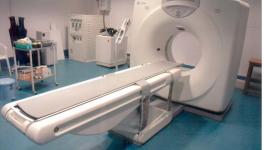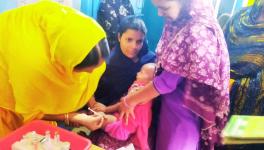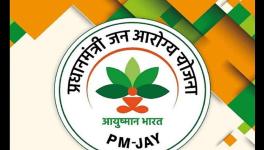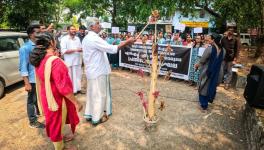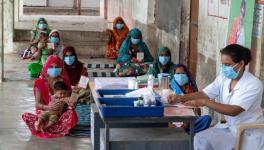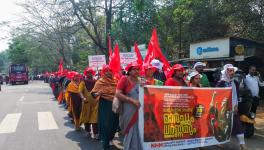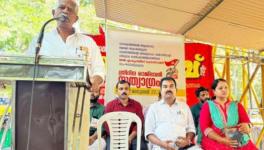Overburdened Docs, Ill-equipped Hospitals: Chronic Disorder Continues to Grip Public Health
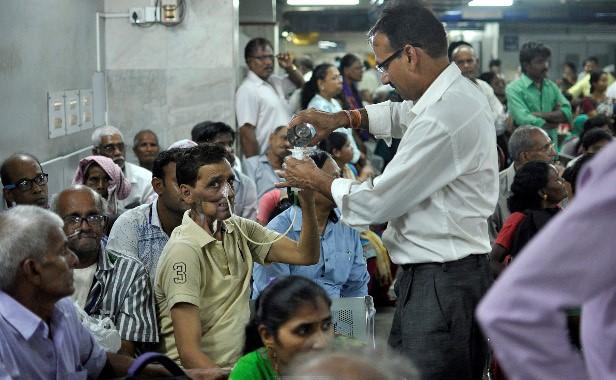
Representational image. | Image Courtesy: India Spend
In the out-patient department (OPD) of a central government hospital in the national capital, queues start forming from as early as 6 am in front of the registration counter that opens about two and a half hours later. When the counter opens, the patients are handed computer-generated tokens that lead them to more queues in front of the glass windows before they’re assigned a doctor. This waiting period, however, does not end here. After being handed over a piece of paper with the name of the hospital on the letterhead – that will by the end of the day become their prescription – the patients disperse to navigate their way across different floors of the building to find the doctors.
Though the building is newly constructed, its shiny exterior fails to eclipse the situation inside where hundreds of patients wait cramped in dimly-lit halls outside the rooms assigned to their doctors. On a busy day, which is almost every day at this hospital, a patient who had joined the queue at six in the morning would have spent about six hours navigating a labyrinth before they can finally get a consultation. And this patient will be fortunate if they are not prescribed any tests, because for that, the waiting period can be anywhere between 4 to 12 weeks.
If this is the situation in a hospital in the capital with state-of-the-art infrastructure and facilities, it makes one wonder what could the condition be in the other parts of the country. The government hospitals are the fundamental bricks of the tertiary healthcare. The failing primary and secondary healthcare system in both rural and urban areas of the country push the public-funded healthcare-dependent patients towards the hospitals for even the most basic health problems – ones that can be taken care of in dispensaries, sub-centres, primary health centres (PHCs), and community health centres (CHCs). This leads to overburdening of the government hospitals which are already underequipped.
Also Read: National Rural Health Mission in Shambles, What Does Budget Promise
Following a question raised in Lok Sabha about the shortage of the doctors in government hospitals on June 21, 2019, the Minister of State for Health and Family Welfare Ashwini Kumar Choubey said in a written answer: “Shortage of doctors including specialist doctors and other paramedical staff in public health facilities particularly in rural areas of the country varies from State to State depending upon State’s/UT’s policies and context..”
Interestingly, Choubey has answered along the same lines every time he has been questioned about the National Health Mission (NHM) or National Rural Health Mission (NRHM) – saying that the implementation of the scheme is under the jurisdiction of the states and UTs. This might lead one to the conclusion that the Centre is not too keen on bearing the responsibility for the maintenance of the public-funded healthcare system in the country.
According to the Statistical Yearbook India 2018, published by the Ministry of Statistics and Programme Implementation, the total number of government hospitals in India is 14,379. The reference period for this number is December 31, 2014 to December 31, 2017. However, the National Health Profile (NHP) 2018, released by the Central Bureau of Health Intelligence says that the number of government hospitals is 23,582 for a similar reference period. This is also the number that has been quoted time and again by several ministers since the release of NHP.
However, there is one small problem with the data presented by the NHP – an easy-to-miss footnote under the table informs the reader that for 15 states and one union territory, the number of PHCs have been included in the number of hospitals in the state. This makes one wonder, why are the health centres that form the backbone of primary healthcare system being counted by the government as hospitals?
As per the data presented in the Statistical Yearbook, in the 14,379 government hospitals across the country, the total number of beds is 6,34,879. For the same reference period, the number of government allopathic doctors is 1,13,328.
| Average population per govt. hospital | 105065 |
|---|---|
| Average population per govt. hospital bed | 1809.8 |
| Average population per govt. allopathic doctor | 9085.9 |
Projected population is taken from Report of the Technical Group on Population Projections May 2006, National Commission on Population, Registrar General of India
According to Jan Swasthya Abhiyan, a movement working to achieve the goal of ‘health for all’, even though these numbers look quite alright, they do not paint a clear picture of the public-funded healthcare system in the country. There is a saturation of doctors in the urban and more accessible areas of the country, while most posts in the hospitals in the rural and remote areas remain vacant. Choubey had said in Lok Sabha: “The State-wise details of the number of posts of doctors lying vacant in the country is not maintained centrally.”
However, one can infer from the data given in the Statistical Yearbook 2018 that while in certain states, the amount of population per government hospital bed and the amount of population per government allopathic doctor is above average, in a huge number of states, the numbers are not even close to the average.
In 14 out of the 29 states across the country and one UT, the population per government hospital bed is more than the average. The situation is the worst in Bihar, where one bed serves 8645.31 people, which is 377.69% more than the average across the country. Bihar is followed by Andhra Pradesh, Uttar Pradesh, Haryana, and Jharkhand.
| State | Population per govt. hospital bed |
|---|---|
| Bihar | 8645.3 |
| Andhra Pradesh | 3818.9 |
| Uttar Pradesh | 3694.5 |
| Haryana | 3660.9 |
| Jharkhand | 3078.9 |
The states with smaller populations and union territories are doing better in this area, and among the bigger states, Arunachal Pradesh, Himachal Pradesh, and Kerala are doing well when compared to other states, with each bed serving 573.71, 758.24, and 938.77 people, respectively. Delhi also ranks quite high on the list, with one hospital bed available for every 824 people.
Also Read: Grim Picture of NRHM: Ailing CHCs and Shortage of Doctors
The same is the case for the availability of doctors. While the number of people being served by each doctor is way better than the average for some states, the scarcity in other states shrouds that. In 15 out of the 29 states and one UT, the population per government allopathic doctor is more than the country’s average. Bihar is again the worst performer, followed by Uttar Pradesh, Jharkhand, Madhya Pradesh, and Andhra Pradesh. In Bihar, the population served by one government allopathic doctor is 29057.05, which is 219.8% more than the average across the country.
| State | Population per govt. allopathic doctor |
|---|---|
| Bihar | 29,057.05 |
| Uttar Pradesh | 20,594.10 |
| Jharkhand | 18,518.13 |
| Madhya Pradesh | 18,466.07 |
| Andhra Pradesh | 17,278.26 |
Once again, the situation is better in the smaller states and union territories. Among the larger states, Arunachal Pradesh, Himachal, and Kerala again lie higher up on the list, with population per doctor being 3174.64, 4713.91, and 6809.89 respectively. The national capital ranks second on the list, with one government doctor available for every 2202.83.
However, this data still does not give us a clear picture of the conditions in the government hospitals across the country. A doctor working in one of the biggest central government hospitals in the capital told NewsClick on the condition of anonymity, “In private hospitals, they keep the patients admitted for as long as they can, to maximise their earnings. In our hospitals, we are forced to send the patients as soon as their lives are out of danger, so that the beds can be given to more patients. Even in the biggest government hospitals, you will see 3-4 patients sharing one bed in the general wards. And if this is the situation here, who knows what is going on in other parts of the country?”
Get the latest reports & analysis with people's perspective on Protests, movements & deep analytical videos, discussions of the current affairs in your Telegram app. Subscribe to NewsClick's Telegram channel & get Real-Time updates on stories, as they get published on our website.









